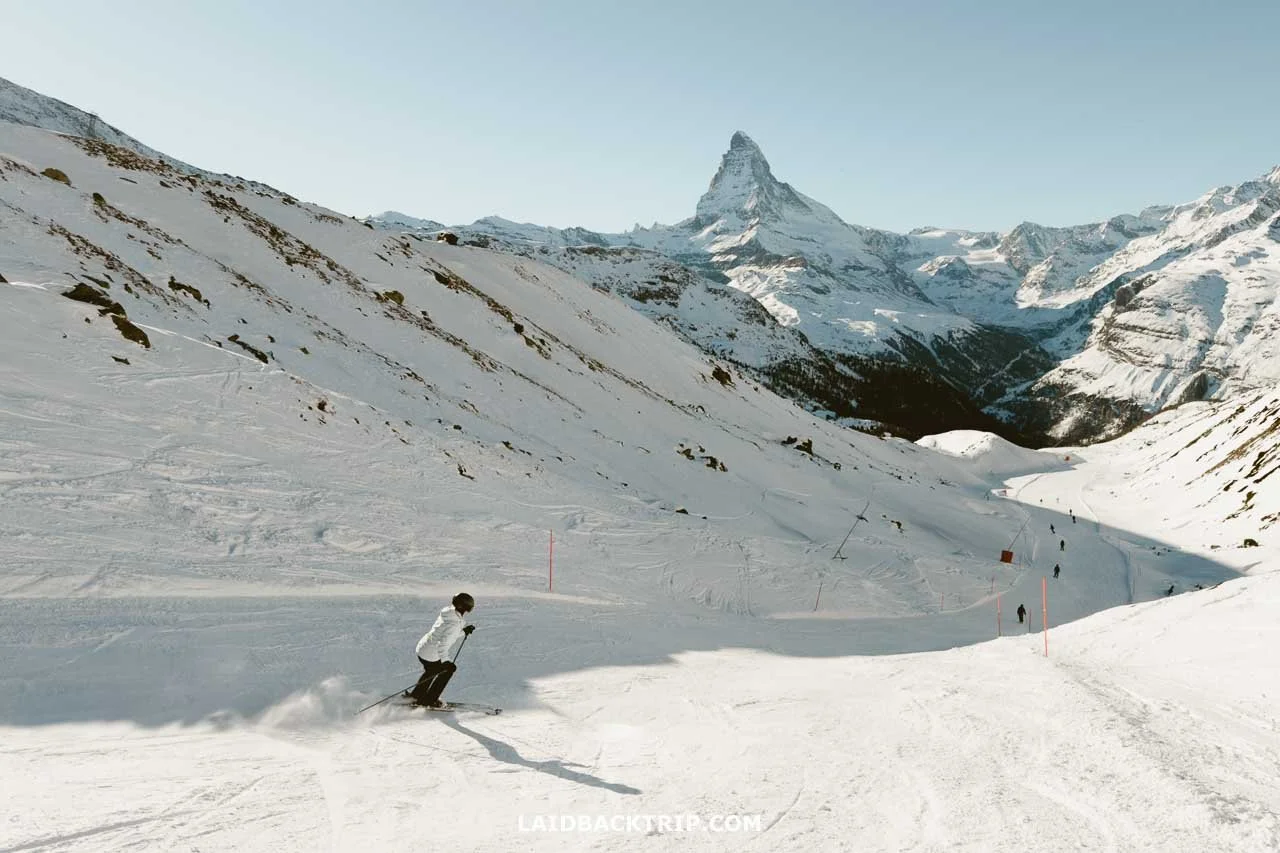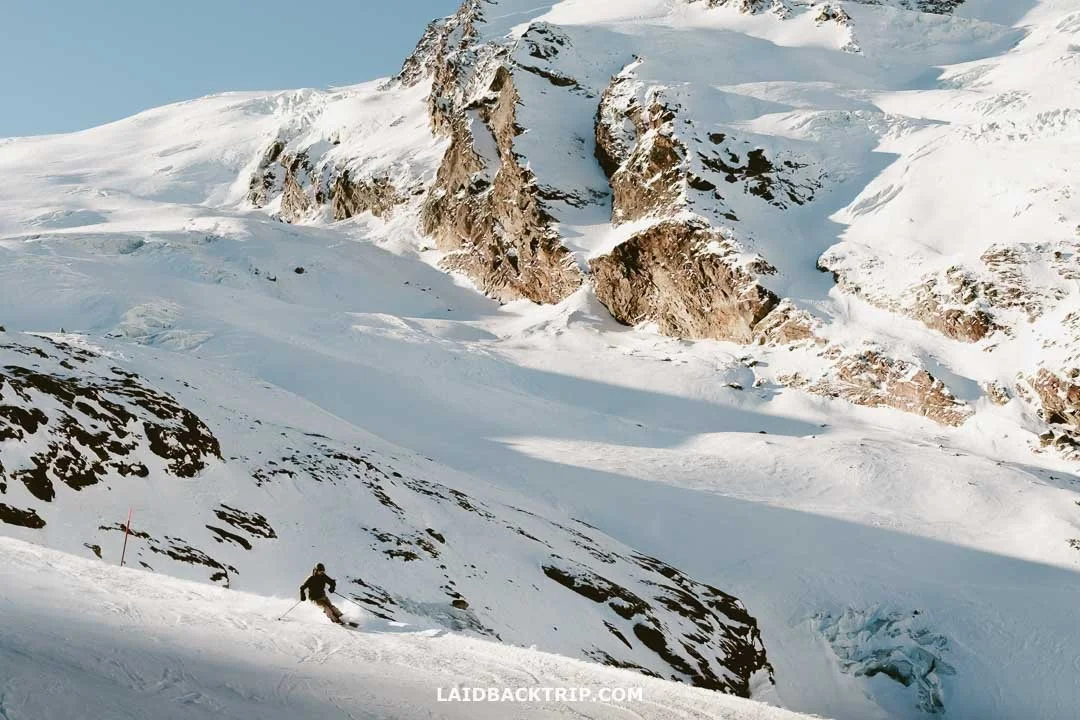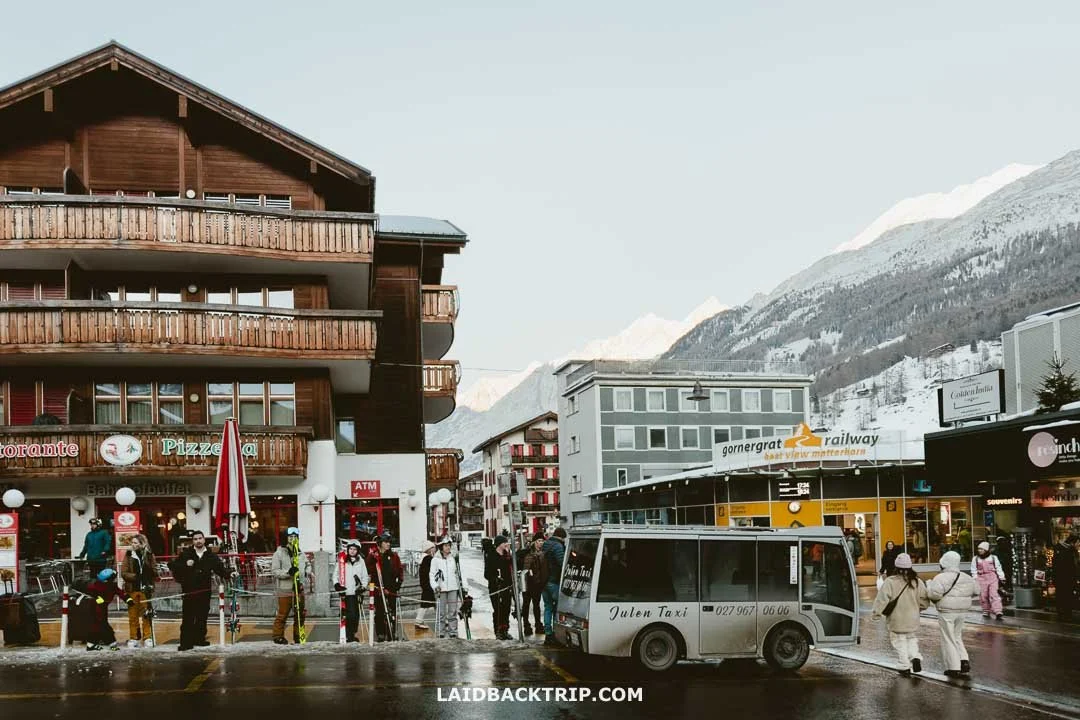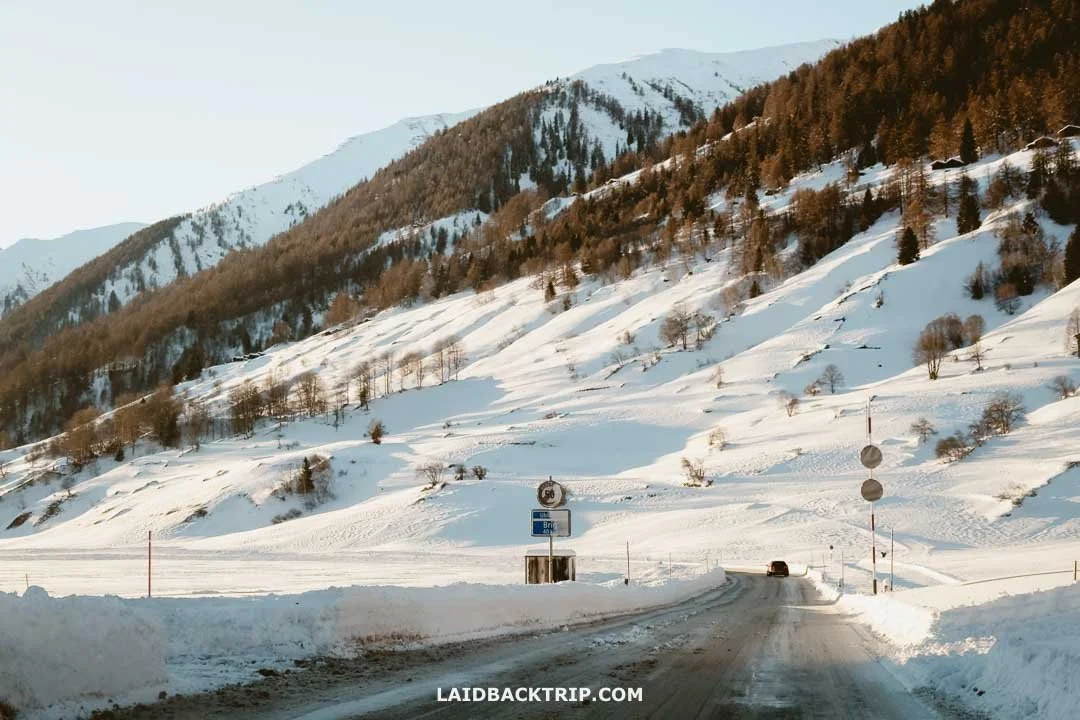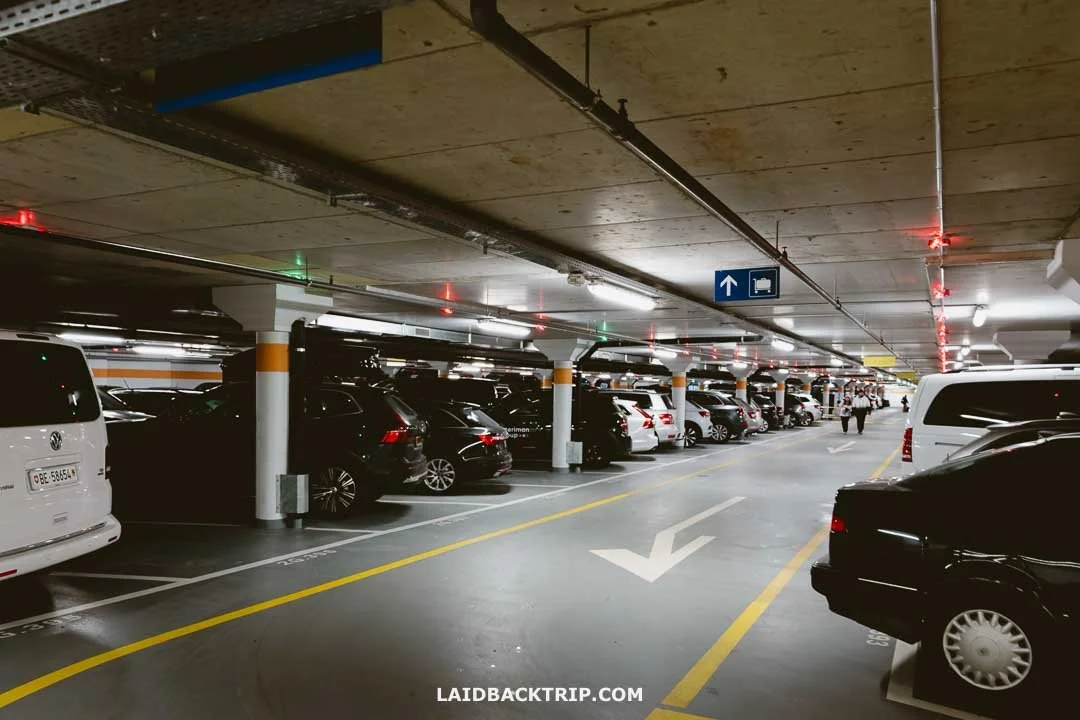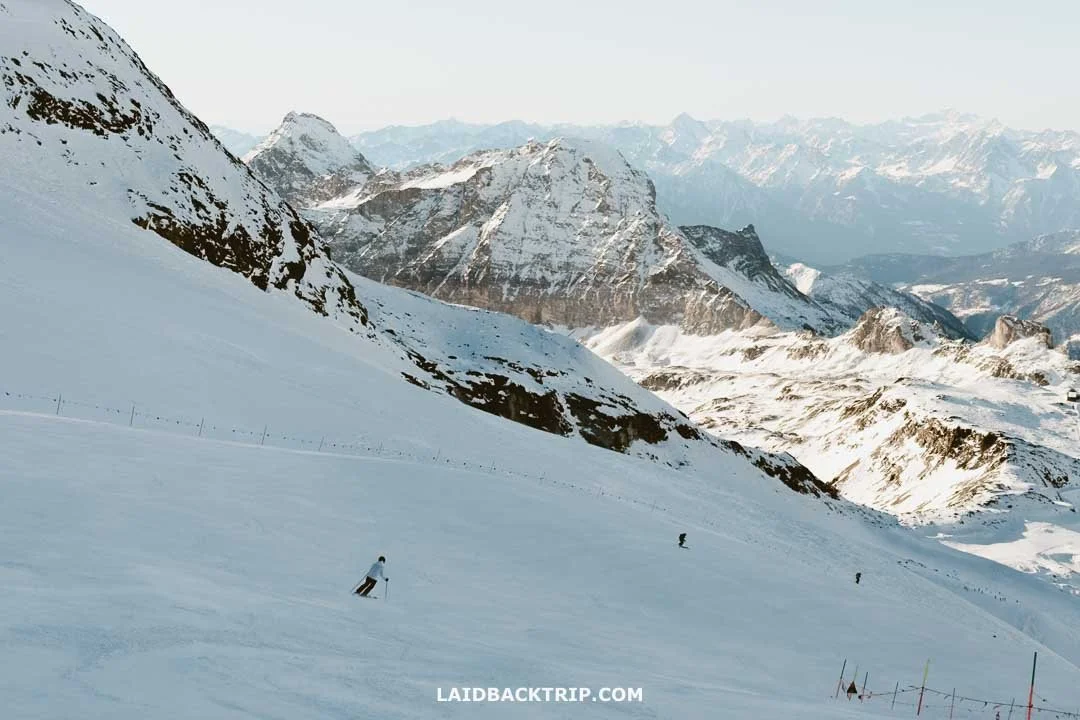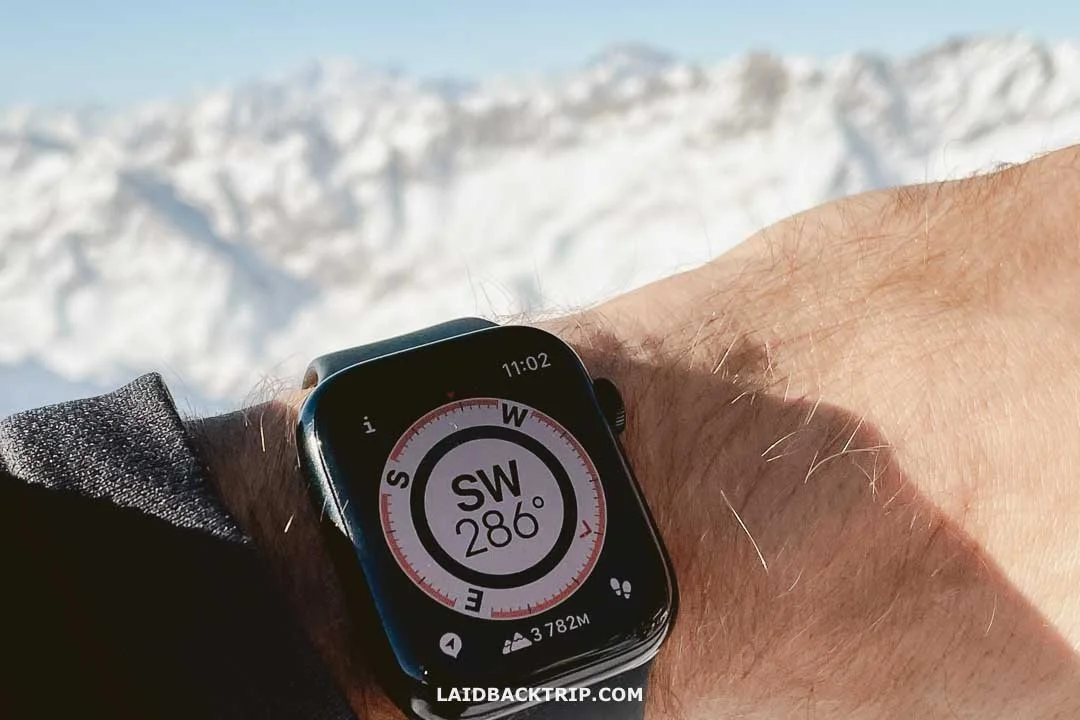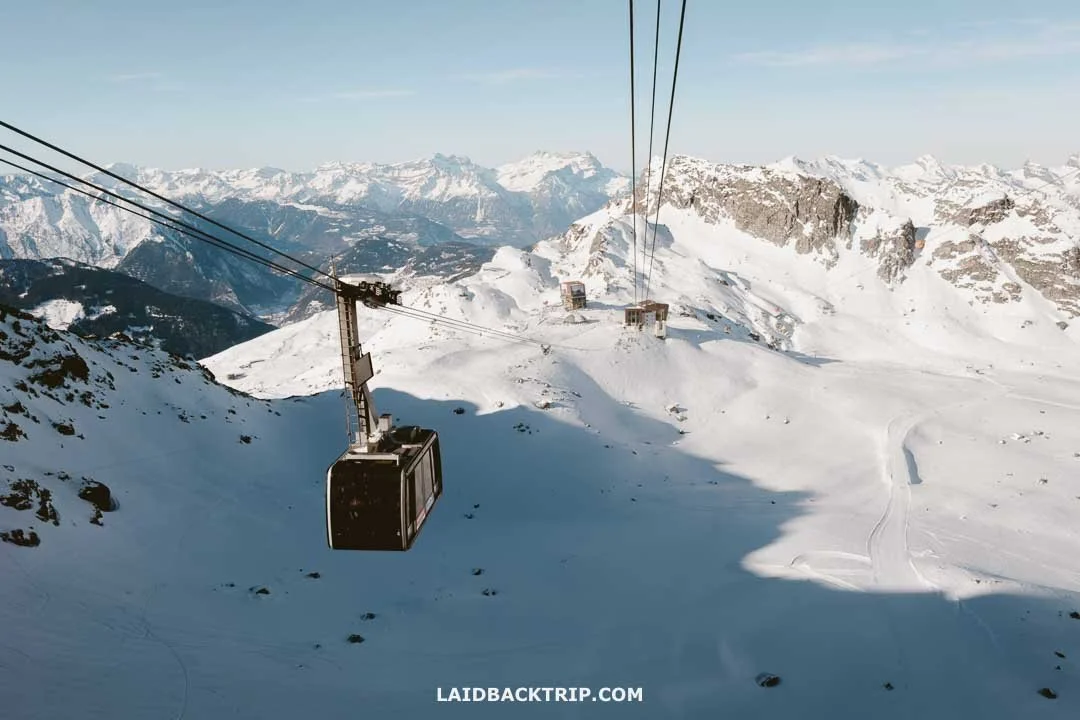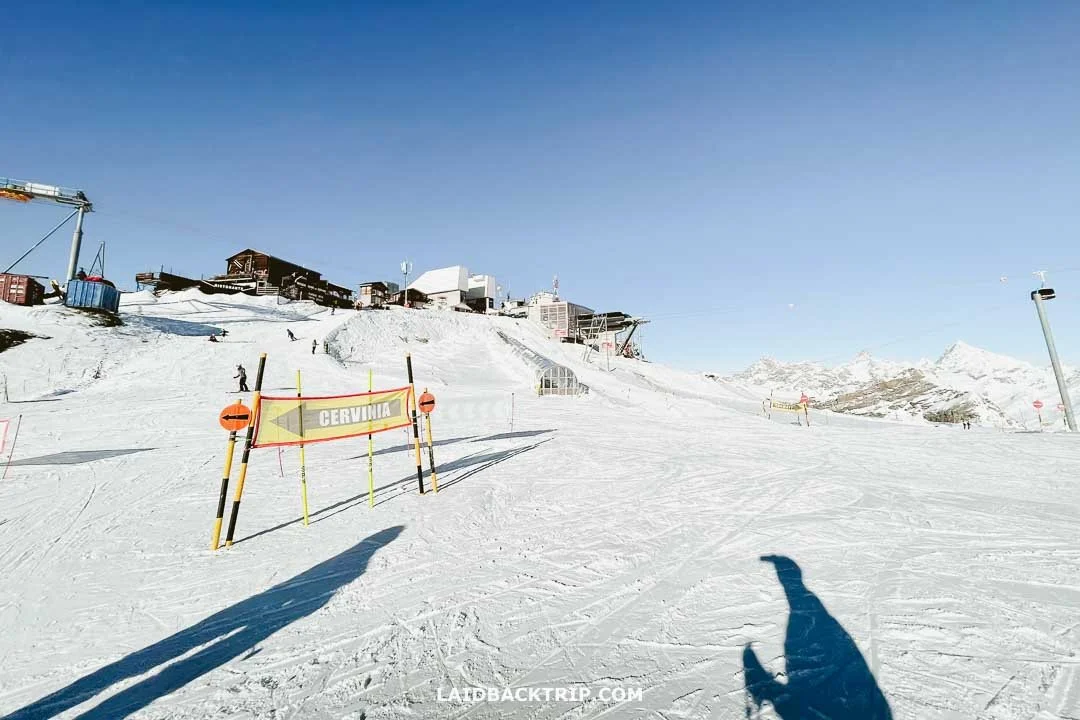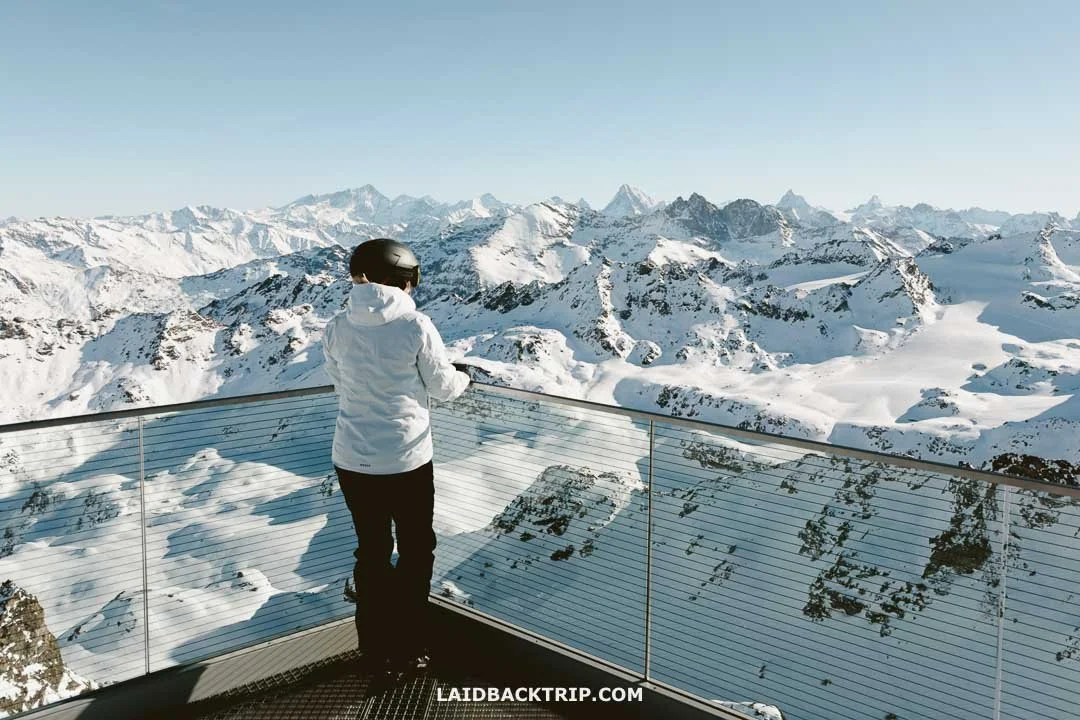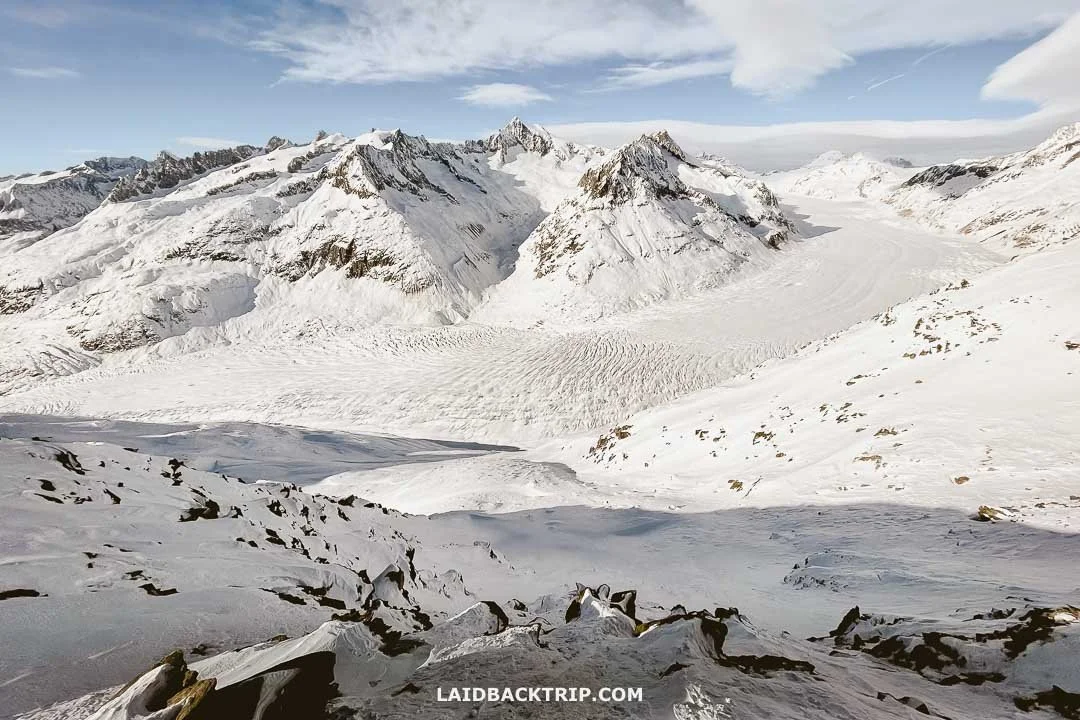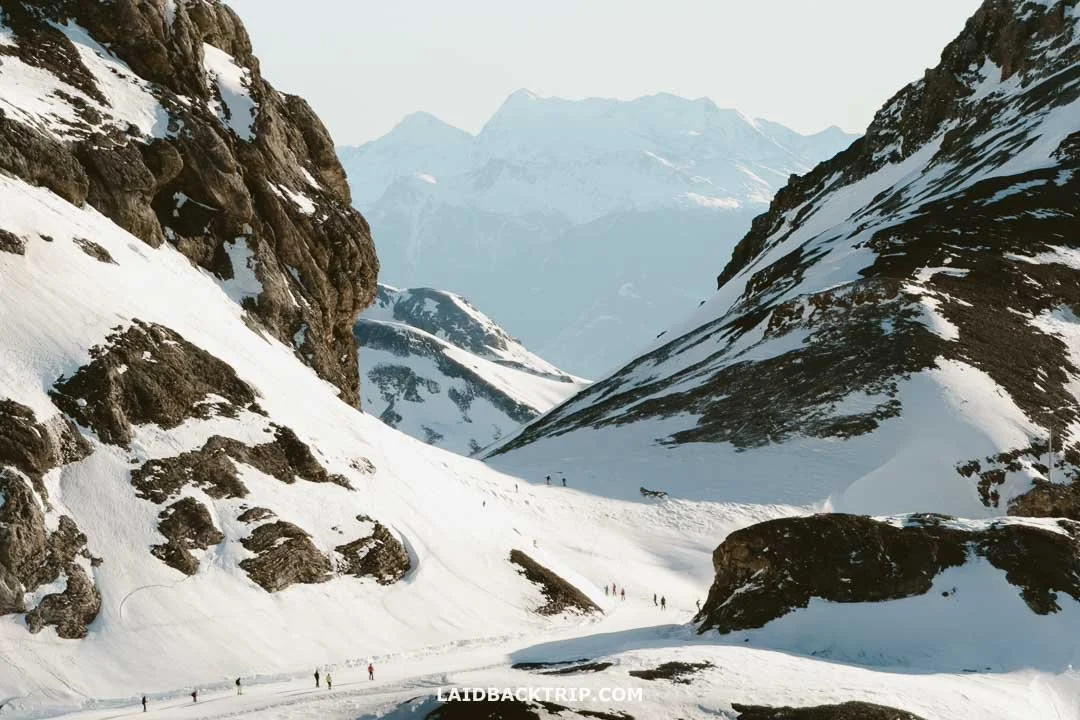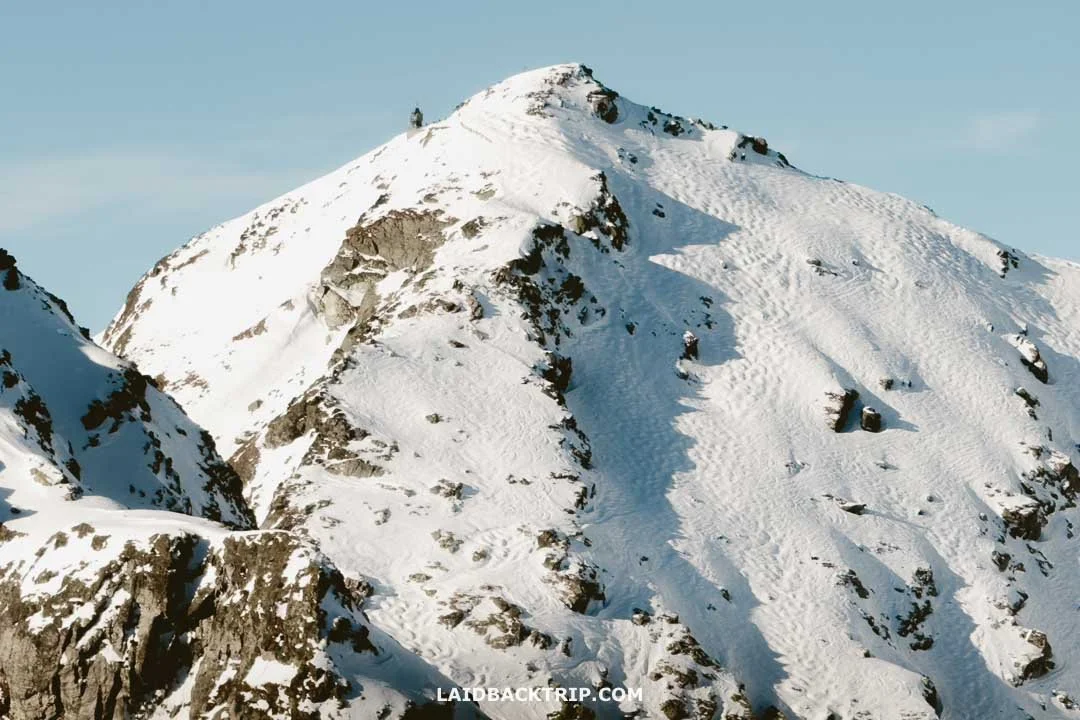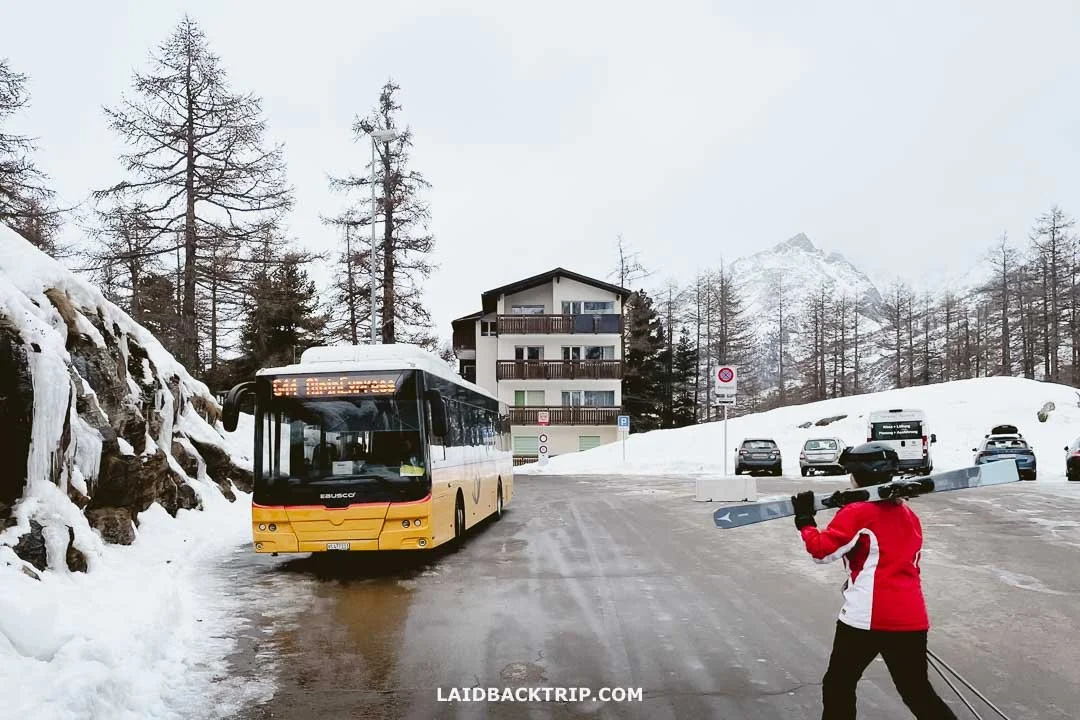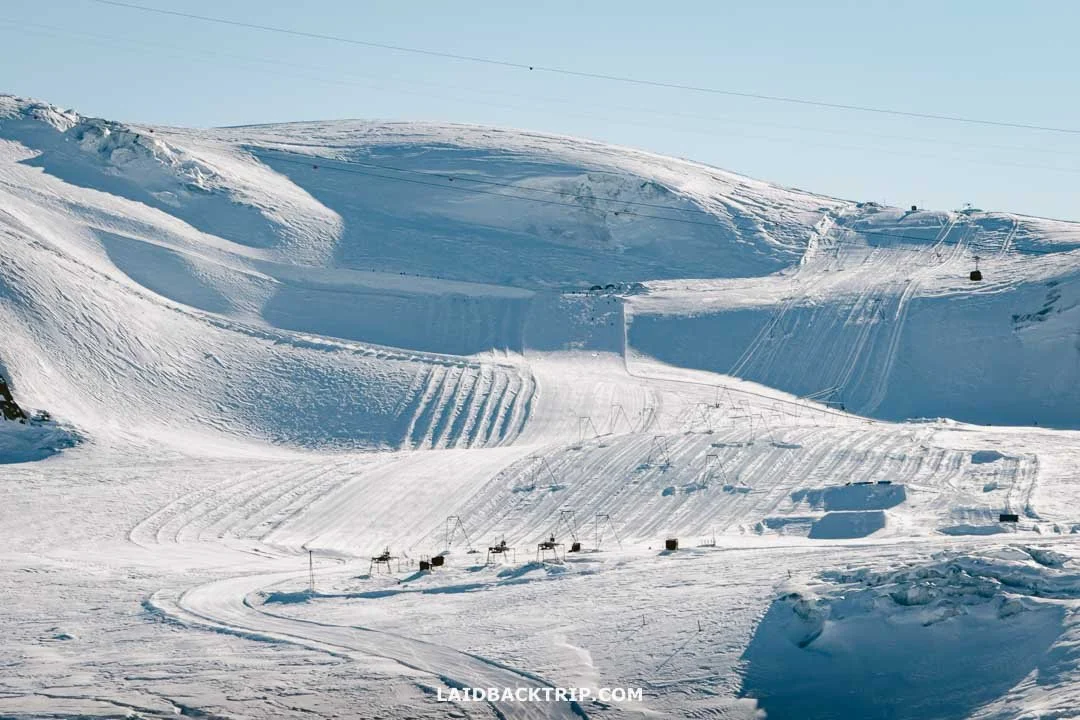Essential Things to Know About Skiing in Switzerland
We love skiing in Switzerland - it's got awesome scenery and snow!
Planning a skiing trip to Switzerland and wondering what essentials you need to know? You're in the right place! Here's a rundown of key tips to make your trip epic.
Over the past two years, we've hit up five premier Swiss ski resorts (some more than once), and here's all the knowledge we've picked up from these epic adventures.
First up on our itinerary was Zermatt, home to the iconic Matterhorn - one of the world's most famous ski resorts. Next, we checked out Saas-Fee, which quickly became our favorite thanks to its awesome glacier skiing and the chill vibes. We also took on the slopes of Aletsch Arena, a dream come true since we'd wanted to see the Aletsch Glacier - the largest in the Alps - for some time. The following year, we added Crans-Montana to our list, which is known for its sun-drenched slopes and the Plaine Morte glacier. Finally, we wrapped up with 4 Vallees, boasting a whopping 410 kilometers of slopes, making it one of the largest ski areas in the Swiss Alps.
Switzerland has so many other resorts we haven't hit yet, like Davos-Klosters or St. Moritz, but our tips should be useful there, too. While we focused on Switzerland because we've skied there the most recently, this info can be handy for skiing in other top European spots like France, Austria, or Italy.
Skiing in Switzerland is some of the best in the world.
Some Resorts Are Car-Free
One of the coolest things about some Swiss ski resorts is that they're located in car-free villages. While it sounds pretty awesome, it did create a few planning headaches for us. We'll share some tips throughout this post since it impacts more than one thing (shuttle buses, parking, valley cable car stations, etc.).
The biggest inconvenience is that you usually can't drive right up to your hotel or the cable car. But don't worry, there's always a way around it. For example, in Aletsch, we had to take a gondola from the valley to the car-free village on the mountain (where the resort technically starts). No matter if you're at Aletsch just for a day of skiing or planning a longer stay in one of the three resort villages - Riederalp, Bettmeralp, or Fiescheralp - the situation is the same for everyone.
If the parking was just before the village, there was always a bus stop where we could catch a shuttle to the cable car station. So, while you won't be able to drive around in these villages, there's no need to stress - solutions are always at hand.
We discovered that 'car-free' doesn't mean completely without vehicles; we still saw shuttle buses, taxis, and snowmobiles transporting tourists and goods between lodges outside the village (usually on the slopes).
In car-free villages like Zermatt in Switzerland, they use electric vehicles for transportation.
The most striking example was in Zermatt, which is super busy due to both skiers and non-skiers visiting just for the scenery. Our favorite part was watching the town buzz with people while miniature taxis and buses navigated the chaos on the narrow streets. It was quite the sight, especially from a shuttle bus window. Those drivers deserve medals for their zen-like composure - each journey looked pretty nerve-wracking.
Taking a Train to the Ski Resort Is Easy
One of the coolest things about skiing in Switzerland is that many of the resorts are directly accessible by train from almost anywhere. The craziest part is that at some resorts, the train stops right at the valley cable car station. In Aletsch, the walk from the train platform to the cable car boarding area is less than 30 seconds, even if you're lugging your skis and in ski boots. Even if you're based in a larger city like Lausanne, Bern, or Zurich, you can always find a ski resort that's easily reached by train.
Lots of Switzerland's best ski resorts are super accessible by train.
Our favorite experience with the Swiss railway was getting off the train at Zermatt Bahnhof and walking about 50 meters to the base station of the Gornergrat funicular. The ride was slow but scenic, taking about 40 minutes to reach Gornergrat. We used it multiple times, even once from Riffelberg, to avoid the shuttle bus line. The summit station at 3,089 meters offers one of the best views of the Matterhorn. The piste to the Gifthittli lift from there was also fun.
Just be prepared for the high cost of train tickets in Switzerland. If you plan on taking a lot of trains, it might be worth getting the Half Fare Card, which gives you 50% off the regular price. You just need to figure out if the initial investment is worth it - usually, it is if you plan to use trains a lot.
How Is Driving Around Switzerland in Winter?
We knew driving around Switzerland was supposed to be easy, but we were surprised at how smooth it was (plus, no snowstorm to deal with)! Even getting to the high-altitude ski resorts was fine, thanks to good weather, though this can vary each visit.
Snow tires weren't mandatory when we were there unless driving in wintry conditions. We had snow tires since we traveled from Czechia, Germany, and Austria, where they're mandatory from November to April. If you're renting a car in Switzerland, make sure it has winter tires, just to be sure.
Winter tires are definitely a must when driving to Swiss ski resorts.
As for snow chains, we didn’t bring them because we kept an eye on the forecast and knew the roads would be clear. When it snowed, we skipped skiing since most lifts were shut down. In case of a snowstorm, it’s always best to delay your trip - snow usually gets cleared pretty quickly. You'd probably only need chains if you’re heading to a chalet or a more remote area off the main roads.
And don't forget, most mountain passes are closed in winter! On our drive from Andermatt to Brig, we had to take the Furka car train from Realp to Oberwald, which turned out to be a pretty cool experience! A final heads-up: You'll need a toll vignette for the Swiss highways, which we bought online. It worked for both our trips, since it’s valid for 14 months.
Taking the Furka car train cut a few hours off our journey to Zermatt.
Parking Is Usually Convenient
Parking can often be the most stressful part of any trip, but we found that Swiss ski resorts usually provide ample parking for tourists, whether you're staying for a day or a week. Resorts have large parking garages or lots conveniently located near cable car stations or shuttle bus stops that will take you to the nearest one.
The downside is that almost all of them charge a fee (most offer contactless payments). Some garages even let you book a spot in advance, as we did in Tasch. It was great - we prepaid in the evening, and the barrier opened automatically when entering and leaving. No need to look for payment machines!
All the ski resorts we visited in Switzerland had plenty of parking.
There are exceptions, like Aminona in Crans-Montana (where you need to take a shuttle bus) or de l'Ours in 4 Vallées (which had a parking lot right next to the cable car station), and these were free.
Remember, if you're booking a hotel at the ski resort, your accommodation might have parking available, making everything easier (and cheaper). If parking isn't available, or if you're staying in a car-free village, there's always a designated parking area for such instances. For example, before visiting Zermatt, we parked in a huge garage in Tasch, while in Saas-Fee, the parking garage marked the end of the road and the beginning of the resort village.
When we visited Saas-Fee on a day trip just before New Year's Eve, one of the busiest times of the year, everything went smoothly. There were plenty of parking attendants who guided us to a spot with ease. We arrived early, so we're not sure how they handled the crowds later, but that's another story.
Be Prepared for Extremely Long Ski Runs
With the significant elevation differences between base and summit stations, Switzerland boasts some of the longest ski runs in the world. Slopes stretching 10 kilometers are not exactly rare, and the longest one in Zermatt (to Valtournenche) exceeds 20 kilometers.
Hitting the 22km red run from Klein Matterhorn to Valtournenche was an awesome adventure.
Zermatt is probably the best example - it took us around 45 minutes just to get from the village at 1620 meters to the summit of Klein Matterhorn at 3883 meters. While I didn't clock our runs exactly (I was too busy enjoying the skiing), I did check the timestamps on our photos. Based on those (and I took a lot of pics on the way down, so the time is skewed), it looks like it took us roughly the same amount of time to ski back down to where we started.
Experience the Apres Ski
The term apres-ski, which literally means 'after skiing,' is a huge part of European skiing culture, and Switzerland is no exception. Over time, the term has evolved and now encompasses much more than just having a drink in a mountain hut and socializing. It's a global phenomenon these days!
One unique aspect of apres-ski in Switzerland (and Europe in general) is that many popular spots are located right on or near the slopes. This makes the experience even more intense and exciting, as everyone is still in their ski gear.
A prime example is Zermatt's Hennu Stall, one of the most popular apres-ski bars in town. It was loud and super crowded, even at 4 PM - definitely, the place to be after a day of skiing. Plus, there's the added thrill (or challenge) of skiing back down the slope afterward. While some find it part of the fun, we weren't too keen on it, even though this might sound strange coming from a Czech guy.
Apres-ski is a big deal in the Swiss Alps.
Keep in mind that while drinking on the slopes isn't strictly prohibited in Switzerland, there are still consequences if you get involved in a ski accident. Check with your insurance company for their policy on this. Nowadays, apres-ski includes all sorts of activities, from live music and spa treatments to fine dining and partying. Just be prepared - like everything else, apres-ski can be quite pricey, especially in high-end resorts like Verbier and Zermatt.
How Is Skiing in High Altitude?
One of the things that really sets the Swiss Alps apart is the elevation of the ski resorts. It's quite common for villages at the base to be around 1500 meters asl, while the highest points reach 3000 meters. Some resorts, like Zermatt (3800m), Saas-Fee (3500m), and 4 Vallees (3300m), go even higher. For Lucie, high-altitude skiing was new - her experience was with high-altitude hiking the Annapurna Circuit or Inca Trail, but not skiing. I'd skied at higher altitudes before (Bormio, Stubai, etc.), but it was a long time ago.
Skiing at more than 3000 meters was definitely a bigger challenge.
We both found that skiing at higher altitudes is more demanding and tiring, especially with all the steep slopes. While you could follow regular high-altitude skiing tips, like acclimatizing and saving the highest areas for day two or three, we didn't find it necessary. We could feel the altitude at almost 4000 meters, but since we didn't stay long and skied down rather quickly, it wasn't too bad. However, walking to the viewing platform at Klein Matterhorn in ski boots or climbing the stairs from the funicular at Mittelallalin with skis was definitely tougher.
Our biggest struggle was staying hydrated while skiing above 3000 meters all day. The combination of high altitude, physical exertion, and the deceptive cold made it essential to drink enough water.
We carried a daypack with at least two liters of water and refilled often, but it was still not enough. By the afternoon, we both felt it (I more than Lucie). Also, we always used strong sunscreen because the UV rays (plus snow reflection) are much stronger at higher altitudes.
Swiss Ski Resorts Are Huge!
It's not just the altitude that's impressive; the size of Swiss resorts is unbelievable! While we stayed in Brig, we often skipped the smaller Belalp resort, even though it was close by. Locals love it, but we couldn't justify it with Zermatt, Aletsch, and other big resorts just around the corner. The crazy part is that Belalp's highest point is above 3000 meters, with nearly 50 kilometers of slopes. We'd love a resort like that at home - where Spindleruv Mlyn, Czechia's top resort, peaks at 1200 meters asl and has around 25 kilometers of slopes!
Here's a breakdown of the resorts we visited: Zermatt has an incredible 360 kilometers of slopes (including the Swiss and Italian sides). On our first visit, it took three full days to even get a feel for this skiing heaven. Aletsch has about 100 kilometers of slopes, and Crans-Montana and Saas-Fee each have around 150 kilometers (though Saas-Fee is 'only' 100 kilometers without the two smaller resorts in the area). These three are more compact (if you can say that) but still offer loads of groomed slopes and excitement. You can see a lot in one day but expect a long and tiring day.
Switzerland's home to some of the Europe's biggest ski resorts, like 4 Vallees and Zermatt.
Saving the best for last - 4 Vallees boasts 410 kilometers of groomed slopes. This number is almost hard to wrap your head around. The resort covers four valleys (hence the name), and it really takes days (four sounds about right, given the name!) to explore it all.
Skiing the Open Snowfields
It's the little things we love about traveling - the unique details and small interactions, like the time we took a cable car to Rothorn and met a group of Americans who were amazed that there were no trees around the slopes. Since we were well above 2000 meters asl, it felt natural that we were above the tree line, surrounded by a massive expanse of snow. It took me a while to remember that in Aspen, trees are still around at 3500 meters above sea level. We're not diving into the whys (climate, temperatures, soil, glaciers, avalanches, etc.), but rather what that means.
Skiing around 3000 meters was wild; no trees around made it feel so special!
Simply put, skiing above the tree line means enjoying breathtaking panoramic views of the mountains and valleys all day. Skiing on the open snowfields or glaciers is hard to describe - just you, the groomed pistes, and endless snow and ice-capped peaks around.
Switzerland has some of the highest ski resorts in Europe, offering plenty of opportunities to ski down these massive glaciers. Be prepared, though - mornings on the glaciers (often on north slopes) can be chilly. Make sure you have an extra layer, warm gloves, and socks!
And don't worry about the vertical drop. The elevation difference between Mittelallalin (the highest point of Saas-Fee) and mid-stations like Morenia or Spielboden is 1000 meters. In Zermatt, the difference is even more dramatic, with Klein Matterhorn summit station at roughly 3800 meters asl.
You Can Ski Between Countries
One of the coolest things about skiing in Switzerland is the chance to ski between two countries! Resorts like Zermatt-Cervinia (Italy and Switzerland), Portes du Soleil (France and Switzerland), and Ischgl-Samnaun (Austria and Switzerland) offer this incredible experience.
Only a small sign points the way to Cervinia from Zermatt's Klein Matterhorn.
We visited Zermatt-Cervinia twice in two consecutive years, and both times, we got the ski pass that included both countries, even though it was a bit more expensive (but not by much). The best part? We could enjoy the sunny slopes of Cervinia (Italian side) in the morning and then ski on Theodul glacier (Swiss side) after lunch when it wasn't as freezing.
When crossing borders, just make sure you have all the necessary travel documents and that your travel insurance covers both countries. In Zermatt, we also had to buy an add-on to our lift ticket to cross into Cervinia for an extra fee.
Budget tip: Switzerland is way more expensive than Italy, so many people stay in Breuil or Valtournenche on the Italian side to avoid the steep prices for accommodation in Zermatt. Some folks also head over just for lunch or a Bombardino, as it's cheaper, too.
One of the most cool experiences was skiing from Zermatt in Switzerland to Cervinia in Italy.
Travel Insurance
We never leave home without travel insurance that was designed to cover our expenses if something goes wrong during the trip.
Travel insurance protects against theft, flight delays, injury, illness, cancellations, and much more.
World Nomads provides travel insurance for travelers to cover their trip essentials, including sports and adventure activities.
SafetyWing is affordable travel insurance for backpackers, long-term travelers, and digital nomads.
Travel smarter and safer!
Enjoy the Scenery of the Swiss Alps
Switzerland, with its Alps, offers some of the most breathtaking scenery in Europe. For us, enjoying the views while skiing down or taking a cable car to the top was a huge part of the experience. With 48 peaks in Switzerland over 4000 meters (and more than 400 over 3000 meters), it's an incredible place.
We found ourselves balancing between skiing and just soaking in the scenery, as Switzerland is one of those places where you could sit for hours and admire everything around you. Since lift tickets are pricey, we wanted to get the most out of them and eventually returned back to skiing.
You can't beat Switzerland for epic views and awesome ski conditions in Europe.
On our trip to 4 Vallées, we planned our day as more of a scenic tour rather than just skiing. We still did a lot of skiing, but our main goal was to traverse the whole resort, enjoy the epic views from Mont Fort, and return to our starting point in the afternoon. In Aletsch, we left our skis in Fiescheralp and took a cable car to Eggishorn, knowing the black piste back to the village was closed. Eggishorn, the highest point of the resort, provided one of the best viewpoints of the Aletsch Glacier (the biggest glacier in the Alps).
During our snack breaks, we often just sat and marveled at the beauty around us and had to nudge ourselves back onto the slopes. If you're the type who enjoys the scenery and likes to take things slow rather than skiing non-stop from the first cable car to closing time, the Swiss Alps are perfect for you!
Seeing the Aletsch Glacier was definitely one of the highlights of our ski trip to the Swiss Alps.
Switzerland Has Multi-Lingual Cantons (But English Is Fine)
Switzerland has four official languages: German, French, Italian, and Romansh. This might be a bit confusing for first-time visitors. For example, in the Valais/Wallis canton, both French and German are spoken. Davos-Klosters and St. Moritz are in Grisons/Graubünden, a tri-lingual canton where French, German, and Romansh are spoken.
We skied in the Canton of Valais, known for its stunning Alpine scenery and as a French and German-speaking region. It was fascinating to see how different Crans-Montana and 4 Vallees (French-speaking resorts) were compared to Zermatt or Saas-Fee (German-speaking areas).
We went skiing in Valais/Wallis, where you hear both French and German.
The great thing is that locals we met in tourism-related areas (tickets, cable cars, hotels, parking, shops, etc.) all spoke English, so it wasn't an issue. Talking to local tourists was more hit or miss, but our sample size was small. If you want to practice your French, stick to the French-speaking resorts. You'll be surprised how little you need it in the German-speaking areas (and vice versa).
How Switzerland Grades the Slopes?
Explaining slope difficulty in Switzerland is easy since they use the standard European grading system, which you might already know. If you've skied in Europe before, you know what to expect. If not, here's the gist: we generally have three types of slopes—blue, red, and black.
Blue slopes are gentle slopes for beginners and intermediate skiers. They're among the most frequent in Swiss resorts, often filled with families and inexperienced skiers practicing and improving. Despite their mild nature, they're a lot of fun. We love warming up on blue pistes in the morning or hitting them in the afternoon when our legs get tired, and we want to avoid injuries. Some resorts like Aletsch have a good selection of blue pistes, but in Saas-Fee, there were really few. Keep in mind that some resorts offer more challenging slopes than others, despite what their marketing might say.
Red slopes are probably the most common in Switzerland. They offer steeper terrain suitable for intermediate to advanced skiers. We usually spend most of our time on these runs. Red pistes often offer varying terrain - some sections can be as easy as blue runs, and some as difficult as black pistes (there's often a catwalk if it's too steep). The famous de l'Ours piste in 4 Vallees is a perfect example—it has everything and is pure fun to ride down.
L'Ours piste in 4 Vallees was one of the most thrilling red runs we tackled in Switzerland.
Black slopes are the most difficult and meant for advanced to expert skiers. We love skiing on black slopes as early as possible since the snow is in the best shape in the morning, especially on sunny slopes like Kandahar in Crans-Montana. The sometimes frustrating thing about Swiss black slopes is that not all of them are groomed. If you're not a fan of huge moguls and extreme inclines, always check the slope condition before setting off.
Some European resorts also use green for the easiest slopes (even easier than blue), but all the Swiss places we checked used just blue. So, remember the three-color system.
Then there's the case of yellow-colored slopes, which is not an official color in the grading system, but many resorts use it for marked but usually ungroomed trails that make off-piste skiing safer (Col des Gentianes and Mont Gele are great examples). Yellow slopes vary in terrain, difficulty, and avalanche danger, so it's always good to do some basic research before attempting them. Technically, these pistes should be avalanche-controlled, but many look more avalanche-prone than regular slopes.
If you're really into proper off-piste skiing, consider hiring an experienced guide who knows the safe trails. Don't forget you'll often be skiing on glaciers, so stay inbound unless you know the terrain. Also, make sure you have all the avalanche gear - probe, beacon, and shovel. Lastly, places like Zermatt aren't really known for off-piste skiing, so look into it first if that's your thing (Verbier is quite popular in this regard).
Some off-piste routes in 4 Vallees looked pretty hardcore.
Free Shuttle Buses Are Ideal for Getting Around
Getting around Swiss ski resorts is easy with free shuttle buses, which are quite common in Europe, and Switzerland is no exception. These buses make everything so much simpler.
For example, we always took the free shuttle bus from Zermatt Bahnhof to get to the Matterhorn Express, which eventually took us to Glacier Paradise, the highest point of the resort. Instead of walking the 1.2 kilometers with our ski gear, we enjoyed the convenient and free ride. Another place we used the shuttle was in Saas-Fee, where the parking garage was about 800 meters from the Alpin Express cable car station.
The free shuttle in Saas-Fee made getting around the ski resort super easy.
The only downside is that there are often more skiers waiting for the shuttle than the bus can comfortably hold. If you ever wondered how many people in ski gear can fit into a bus (and in Zermatt, it's a miniature bus), you're about to find out. Spoiler: it's a lot! Definitely more than you'd think before hopping on.
There's always the option of taking a taxi (expensive but worth it if you're in a larger group) or just walking. For instance, we had to wait for the shuttle bus in Zermatt for about 15 minutes on several occasions, and those waiting for taxis might still be there, illustrating that taxis weren't often more efficient than the buses.
There was always a long line for the shuttle bus at the end of the ski day in Zermatt.
Everything Is Expensive (Lift Tickets, Accommodation, Food, etc.)
Switzerland is one of the most expensive countries in the world, and skiing isn't exactly the cheapest sport either. So, putting these two things together (and considering we're from Czechia, with much lower average wages), we had to make some compromises to afford this trip.
We stayed with Lucie's relatives, which saved us a ton of money but came with a few downsides. For example, we had to drive to the ski resorts each day. Aletsch was just a 10-minute drive, but getting to Crans-Montana or 4 Vallees took over an hour, and the trip to Zermatt was even longer since we had to park in Tasch and take the train from there. Honestly, it was a minor inconvenience compared to how much we saved, especially since hotels in Zermatt, Crans-Montana, and Verbier are crazy expensive.
Switzerland was hands down the most expensive ski destination we've ever been to.
We also saved money by cooking at home and preparing snacks for the next day instead of eating out. If you can find a good deal on cozy accommodation that includes half board, it could save you a lot of money. If you're used to dining out every day during your vacation, be prepared for it to eat up a big chunk of your budget. This tried-and-tested budget tip worked great in Switzerland - just like it always does.
Still, we had to shell out for the very expensive lift tickets, which often cost over 100+ CHF per adult per day, even with early bookings. Funny story: one of the most shocking discoveries was when I checked lift ticket prices at premier ski resorts in the U.S. and found out that Zermatt is actually 'cheap' by comparison. Lift tickets in Vail or Aspen on the same dates often cost three times more than in Switzerland! Mind-boggling, right?
You Can Ski in the Summer in the Swiss Alps
The main skiing season in the Swiss Alps usually starts at the end of November and lasts until April, depending on the snow. This gives you nearly six months to enjoy the slopes, but did you know some resorts offer summer skiing, too? Thanks to high mountains and glaciers, you can ski in Zermatt 365 days a year. Saas-Fee also offers summer skiing.
You can ski in the summer on Zermatt's Theodul Glacier, which sits at about 3800 meters.
The idea of hitting the slopes in a t-shirt, sunglasses, and maybe a windbreaker sounds epic, but we're a bit skeptical. Here's why we haven't tried it yet:
Firstly, summer is the hiking season for us. We love the warm, long days with tons of daylight. Secondly, the skiing area is much smaller in summer. In Zermatt, only 20 kilometers of slopes are available compared to the 360 kilometers during the main season. In Saas-Fee, ski racers take up the best parts of the slopes for training, reducing the area even more. Plus, skiing in July and August is limited to the morning since slopes usually close by noon. Snow quality is another concern - it's still summer, after all.
With so many downsides, a 10-hour drive for an average experience doesn't seem worth it. That doesn't mean we're not tempted to try it someday, but practicality wins for now. If you've skied in Switzerland during the summer, let us know how your experience was!
Avoid School Holidays, Christmas, and New Year's Eve
One of the best pieces of advice we can share is to avoid skiing in Switzerland during school holidays, Christmas, and New Year's Eve. This tip is valid for all skiing countries, so you can apply it to France, Austria, Italy, and beyond.
We recently experienced skiing in Switzerland between Christmas and New Year's Eve, and the difference was noticeable. While the huge ski resorts helped mitigate the crowds a bit, it was still busier than our previous year's trip before Christmas. That time, everything felt more relaxed, which we really appreciated.
Those first few rides on the empty slopes of Saas-Fee's glacier were unforgettable.
Winter school holidays, generally in February, are also incredibly busy. Most of Europe hits the slopes during this period. The dates vary slightly each year, starting as early as January and lasting until March, but February is the peak. Crowds are the main issue, but accommodation prices skyrocket, parking becomes problematic, and you face longer lines and higher lift ticket prices.
Christmas and especially New Year's Eve are crazy travel dates across Europe - not just in ski resorts but also in cities like Prague or Munich. We prefer visiting at other times to avoid the chaos.
Travel Resources
Here you can find links to all the travel resources we use and which you might find helpful when planning your next holiday.
Accommodation: When looking for accommodation, we usually search hotels via Booking.com or Hostelworld.
Tours: Although we love to travel independently, some places are better to visit with a guided tour.
We prefer GetYourGuide for its easy-to-use interface and solid reputation. Another great alternative is Viator.
Rental Cars: When going on a road trip, we always use Rentalcars.com, a reliable site for booking a rental car in advance.
Flight Tickets: When looking for flight tickets, you can search Skyscanner to find the best price.
Travel Insurance: World Nomads and SafetyWing cover against risks of travel.
